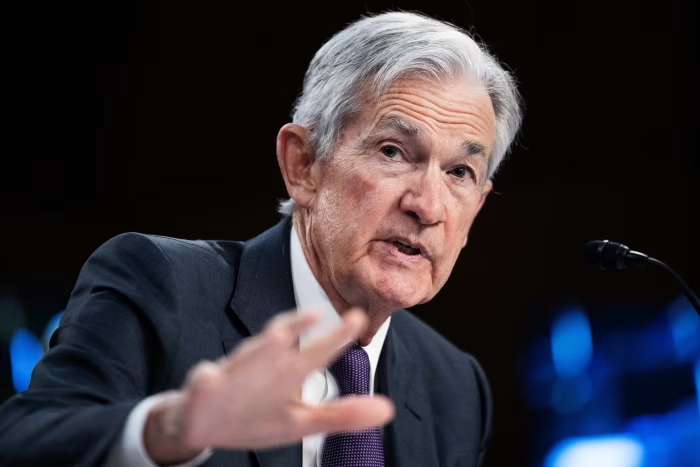Powell U-Turn Economic Strategy is a surprising twist where Federal Reserve Chair Jerome Powell plans a major shift from a previous economic path that did not deliver as hoped. This change could affect interest rates, inflation, and the future of markets and households. In this article, we explain what this means, why it matters, and what comes next. The aim is to give a clear, easy-to-read guide to understanding the shift and its impact.
What Is the Powell U-Turn Economic Strategy?
Jerome Powell, as head of the U.S. Federal Reserve, recently signaled reversing course on an economic strategy that had failed to meet expectations. This strategy included how the Fed managed interest rates, inflation targets, and guidance to the public and markets. Now, he plans a new approach, which many describe as a U-Turn.
Why the U-Turn?
- The previous approach may have failed to stabilize inflation.
- Economic growth was weaker than expected.
- Public confidence and market stability faced challenges.
- Powell sees a need to correct course to protect long-term growth.
Why This U-Turn Is Significant
This shift in Powell’s economic strategy is more than just policy changes. It matters because markets, businesses, and individuals are directly influenced by the Federal Reserve’s direction.
- Markets respond instantly when the Fed signals a change. Stocks, bonds, currencies, and commodities can all shift quickly.
- Interest rates affect everyday life. If Powell changes course, mortgage and loan costs may rise or fall.
- Public trust is key. A shift shows Powell is responsive to changing conditions, but it may also raise questions about the Fed’s consistency.
- Global effects are inevitable. Since the U.S. dollar is the world’s reserve currency, any Fed shift impacts global interest rates, trade, and investment.
What Went Wrong With the Previous Strategy?
Before understanding the new path, it helps to know what did not work with the earlier plan.
- Inflation stayed out of balance. The Fed struggled to keep it near the target of 2 percent.
- Growth was slower than expected despite policy adjustments.
- Communication gaps caused confusion in markets. Mixed signals weakened investor confidence.
- External shocks, such as global supply issues or geopolitical tensions, undercut Fed efforts.
Powell realized that continuing on the same path could worsen the problem. This recognition led to the U-Turn.
What the U-Turn Could Look Like

Although Powell has not laid out every detail, analysts expect the new strategy to include several elements.
Adjusting Interest Rates
The Fed may pause hikes, lower rates sooner, or shift to a more flexible approach. This would help businesses borrow more easily and encourage investment.
Improving Forward Guidance
Markets crave clarity. Powell is likely to offer clearer statements about goals and timelines, helping investors and the public understand the Fed’s priorities.
Data-Driven Decisions
Instead of tying actions to fixed dates, Powell could link them to economic indicators such as unemployment, inflation levels, and wage growth.
Clearer Communication
Plain language and frequent updates will make Fed actions easier to follow. Powell may expand public outreach through speeches and press conferences.
Risks and Challenges of the New Strategy
While the U-Turn offers hope for better results, risks remain.
- Critics may question the Fed’s credibility and accuse Powell of flip-flopping.
- Market volatility could increase as investors adjust to the new direction.
- Economic effects take time. Rate changes or new guidance will not deliver instant results.
- Global uncertainty or fresh shocks could derail even the best-planned strategy.
How This U-Turn Affects Everyday Life
Powell’s decisions ripple through the economy and touch daily life in many ways.
- Loans and mortgages could become cheaper if interest rates fall, making home ownership and business financing easier.
- Savings accounts may yield less if rates drop, though stock markets could benefit.
- Job opportunities could improve as lower borrowing costs encourage companies to hire more workers.
- Consumer prices may stabilize if inflation is managed effectively.
Quick Overview
Consumers benefit from cheaper loans. Businesses get easier access to credit. Investors may see stronger stock markets, while savers face lower interest income. Global markets adjust to new U.S. policy, affecting currencies and trade.
What to Expect Next
Observers are watching closely for signals.
- Upcoming Fed meetings will reveal the next steps.
- Powell’s speeches and interviews may provide clearer guidance.
- Economic reports on inflation, jobs, and GDP will show whether the new approach is working.
The coming months will be critical in proving whether the U-Turn delivers the intended results.
Lessons From the U-Turn
Powell’s change of course may offer long-term lessons. It suggests that flexibility is sometimes better than rigid planning. It shows the value of listening to data and adjusting accordingly. It also highlights the need for better communication between central banks and the public.
Conclusion
Powell U-Turn Economic Strategy is more than a headline. It is a major shift that could define U.S. monetary policy in the coming months. By moving away from a strategy that failed to stabilize inflation and growth, Powell is signaling adaptability.
For consumers, this may mean cheaper loans or stable prices. For businesses, it could encourage more investment. For global markets, it signals that the Federal Reserve is ready to adjust course.
While challenges and risks remain, this U-Turn represents an important moment in economic policy. Its impact will be felt not only in financial markets but also in households, jobs, and everyday life across the world.
Do Follow USA Glory On Instagram
Read Next – Alina Habba Unlawfully Serving as U.S. Attorney for New Jersey






